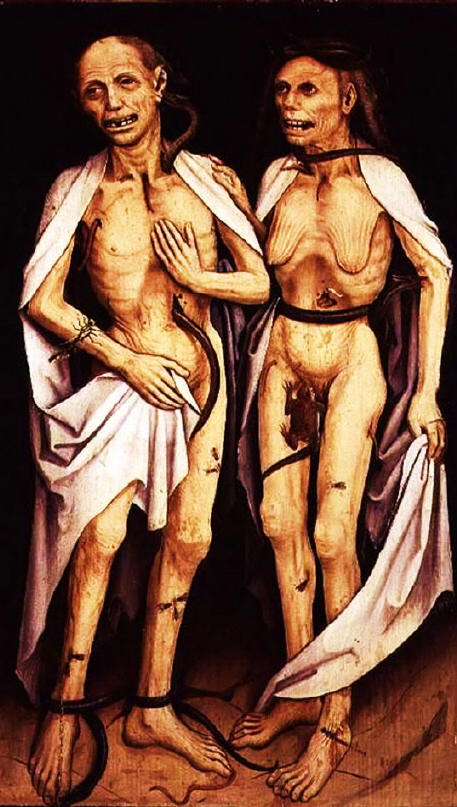This week I am going to try to refrain from throwing gobs of information and manuscripts at you guys and gals and instead show a quick eight minute video titled Black Death Plague and Art History. Normally I am not a fan of showing long videos on my blog as I think it takes away from the importance of why this blog was started; however, this video encompasses much of what I have already talked about while also introducing some new ideas and beliefs about the Black Plague.
Black Death and Art History encompasses most of everything that I have blogged about over the course of this semester. Yet, Black Death Plague and Art History places a much higher emphasis on the use of symbols in Medieval works after the plague; specifically the symbolism of "tortured souls, death, dying, fire and brimstone." Delving further into the effects of the plague; the death's of famous artists such as Ambrogio led to new artists to began moving away from traditional styles and introducing a somber darkness to not only visual art but literature and music as well. [1]
As I have mentioned in some of my earlier blogs, this somber darkness would last decades if not hundreds of years. Symbols like hell, Satan, and the Grim Reaper appeared more frequently, mirroring the attitude of society which understood fear of death and the afterlife to be real.
One of the most interesting and entertaining aspects of this video which really personifies the Black Death is the poem/song that is shared in the end and is where I will leave off for this week.
A Little Macabre Ditty
“A sickly season,” the merchant said,
“The town I left was filled with dead,
And everywhere these queer red flies,
crawled upon the corpse eyes,
Eating them away.”
“Fair make you sick,” the merchant said,
“They crawled upon the wine and bread.
Pale priest with oil and books,
Bulging eyes and crazy looks,
Dropping like the flies.”
“I had to laugh,” the merchant said,
“The doctors purged and dosed and bled;
And proved through solemn disputation.
The case lay in some constellation.
Then, they began to die.”
“First they sneezed,” the merchant said,
“Then they turned the brightest red,
Begged for water, and then fell back.
With bulging eyes, and face turned black,
Then, they waited for the flies.”
“I came away,” the merchant said,
“You can’t do business with the dead.
So I came here to ply my trade,
You’ll find this to be fine brocade.”
...And then, he sneezed!
After watching this video and comparing to some of my earlier blog entries, I want to ask you, my readers, what do you think were the effects of the Black Death on society?
Also if you are looking for some more information on the Black Death I found this link which gave some information about it including a slide or two on the illustrated manuscripts. I wouldn't recommend this page for any use other than just some basic information as it has no sources to deem it as fact. However, it does have some information that could be further researched if you were interested.
https://docs.google.com/presentation/d/10Teh4gB3KCQPkmu8H0asFnSleHc2cBbP5P-VkwPoHLo/embed?hl=en&size=s#slide=id.p4
[1] http://www.youtube.com/watch?v=sw771FW6ljo
